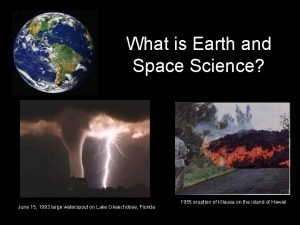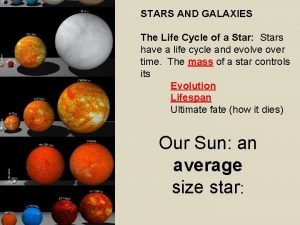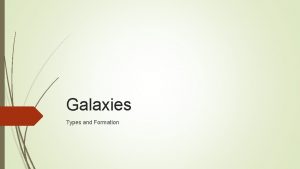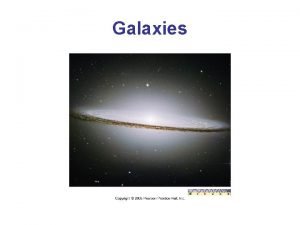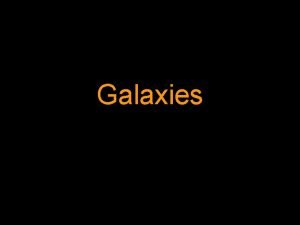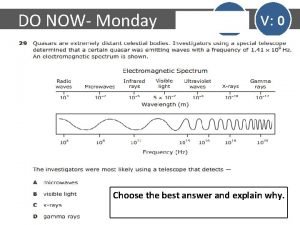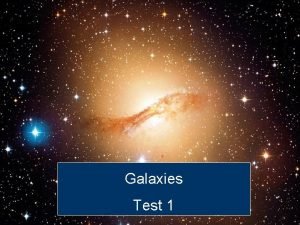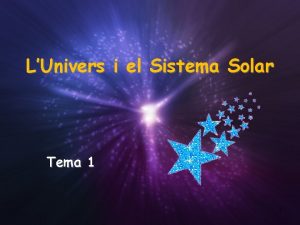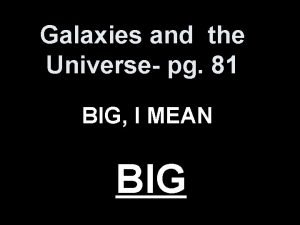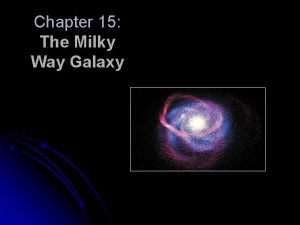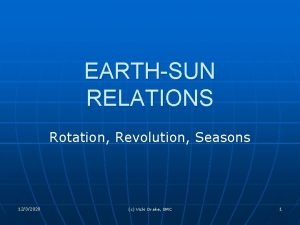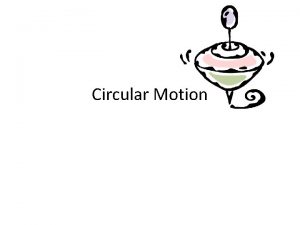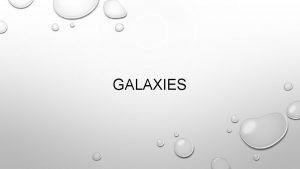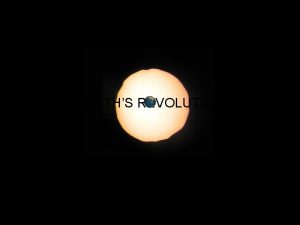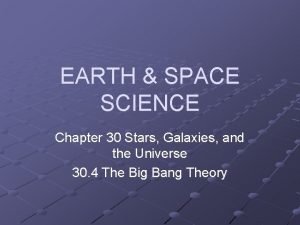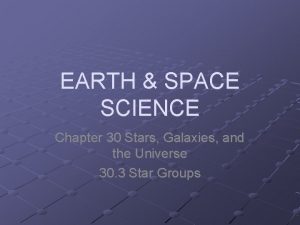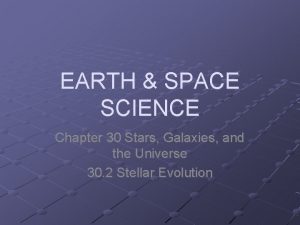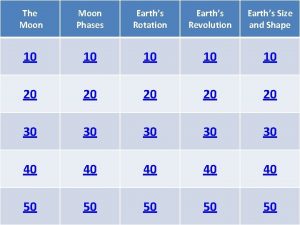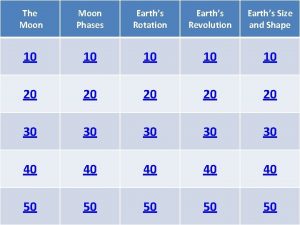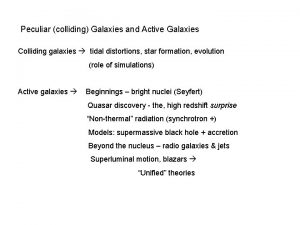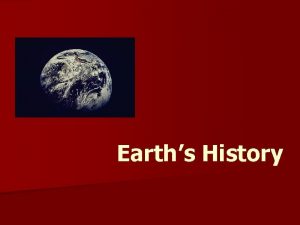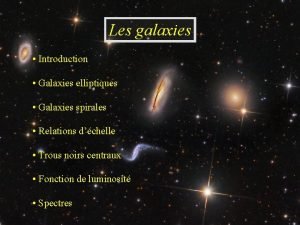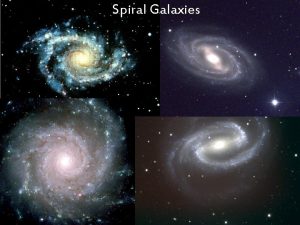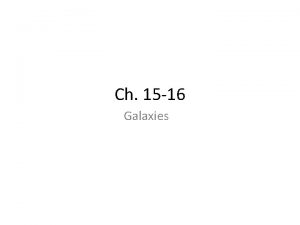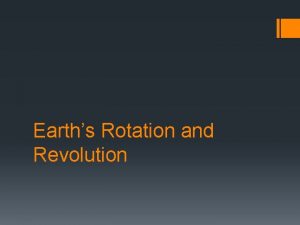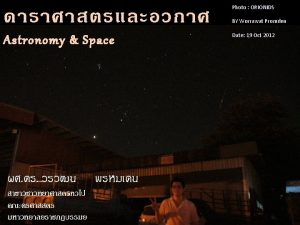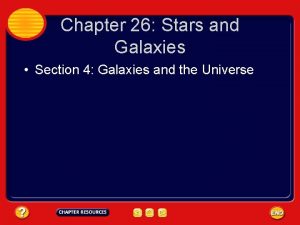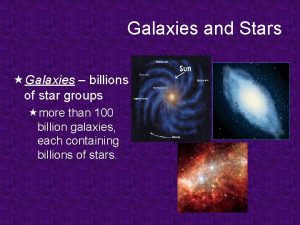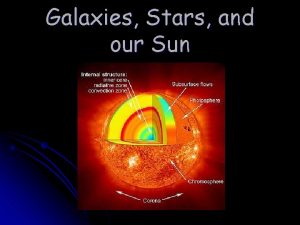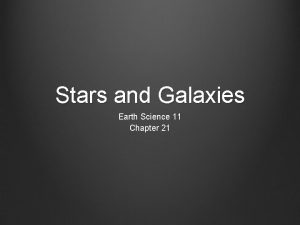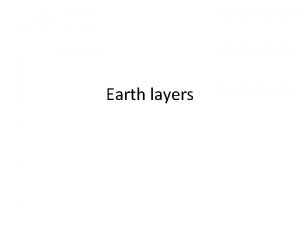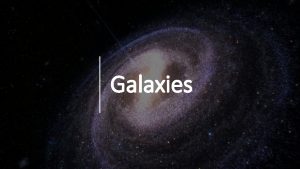Earth and Space Science Earths Revolution Stars Galaxies




























- Slides: 28

Earth and Space Science Earth’s Revolution Stars & Galaxies Our Sun Solar System 100 100 100 200 200 200 300 300 300 400 400 400 500 500 500 Jeopardy Answer Final Question Sun-Earth-Moon

Help (1) Save a duplicate of this template. (2) Enter all answers and questions in the normal view. (view/normal) (3) Change the category headings in the normal view (view/normal) (4) View as a slideshow. (5) Use the home red button after each question. Answer ©Norman Herr, 2003 Question

A-100 • Question: Our milky way is classified as this type of galaxy? • Answer: Spiral. Answer Question

A-200 • Question: The theory that states the universe began as a dense, hot, super massive ball is called…? • Answer: the big bang theory. Answer Question

A-300 • Question: Stars are classified according to which most important characteristics? • Answer: Temperature and Brightness. Answer Question

A-400 • Question: According to this diagram, which star is the coolest? • Answer: Betelgeuse. Answer Question

A-500 • Question: How do scientists know that the universe is expanding? • Answer: The red shift of distant galaxies. Answer Question

B-100 • QUESTION: Our sun is made mostly these two elements? • ANSWER: Hydrogen and Helium. Answer Question

B-200 • QUESTION: The process that powers our sun occurs by atoms fusing together. This process is called…? • ANSWER: Nuclear fusion. Answer Question

B-300 • QUESTION: According to this figure, what part of the sun is letter “C”? • ANSWER: Prominences. Answer Question

B-400 • QUESTION: Our sun makes up what percentage of the total mass of the solar system? • ANSWER: 99. 86% Answer Question

B-500 • QUESTION: Which stage will our sun go through next as it’s fuel begins to burn out? • ANSWER: Red Giant Stage. Answer Question

C-100 • Question: The four planets closest to the sun are classified as what type? • Answer: Terrestrial or Rocky. Answer Question

C-200 • Question: How does a planet’s distance from the sun affect it’s temperature? • Answer: The farther a planet is, the cooler it is. Answer Question

C-300 • QUESTION: Most asteroids lie between the orbits of which two planets? • ANSWER: Mars and Jupiter. Answer Question

C-400 • Question: Describe 3 notable characteristics of the Jovian planets. • Answer: Larger, made of gas, thick atmospheres, more moons, less dense than rocky planets, cooler temperatures, longer orbits. Answer Question

C-500 • Question: Why is Pluto no longer considered a true planet? • Answer: Because of its size, it is not able to clear it’s orbital path. Answer Question

D-100 • Question: The period of time it takes for the Earth to orbit the sun is called…? • Answer: A revolution, or a year, or 365. 25 days. Answer Question

D-200 • Question: This first day of spring is also known as this day in the Earth’s orbit? • Answer: Spring/Vernal Equinox. Answer Question

D-300 • Question: What feature of Earth is responsible for the differences of temperature during the seasons? • Answer: Its tilted axis. Answer Question

D-400 • Question: During which season does the north pole experience 24 hours of daylight? • Answer: Summer. Answer Question

D-500 • QUESTION: During this period in Earth’s revolution, when the Earth closest to the sun, what is the season? • ANSWER: Perihelion, winter. Answer Question

E-100 • Question: What is the darkest part of the shadow caused by an eclipse called? • Answer: The umbra. Answer Question

E-200 • Question: What causes the phases of the moon? • Answer: The amount of sunlight that reflects off of the moon as it orbits Earth. Answer Question

E-300 • QUESTION: Which phase of the moon is represented by number 1? • ANSWER: New moon. Answer Question

E-400 • QUESTION: Explain how a solar eclipse is created? • ANSWER: The orbital path of the moon blocks the suns rays casting a shadow upon the earth. Answer Question

E-500 • QUESTION: A lunar eclipse can only occur during which phase of the moon? • ANSWER: The full moon. Answer Question

FINAL JEOPARDY • QUESTION: Which factors helped in the formation of the planets in our solar system? • ANSWER: accretion (solid materials colliding together), temperature, and gravity. Answer Question
 Electromagnetic star
Electromagnetic star There are millions of stars in
There are millions of stars in Definition of earth and space science
Definition of earth and space science Chapter 30 galaxies and the universe
Chapter 30 galaxies and the universe Elliptical, spiral and irregular.
Elliptical, spiral and irregular. Life cycle of galaxies
Life cycle of galaxies Elliptical galaxies facts
Elliptical galaxies facts Galaxies
Galaxies Era of galaxies
Era of galaxies Critical density
Critical density Types of galaxies
Types of galaxies Brainpop galaxies quiz answers
Brainpop galaxies quiz answers 4 types of galaxies
4 types of galaxies How are galaxies classified? *
How are galaxies classified? * Tipus de galaxies
Tipus de galaxies Type of galaxy
Type of galaxy Evolution of galaxies
Evolution of galaxies Billions of galaxies
Billions of galaxies Galaxies lesson plan
Galaxies lesson plan Your favorite subject
Your favorite subject Revolution of earth seasons
Revolution of earth seasons Rotation and revolution of earth
Rotation and revolution of earth Earths layer foldable
Earths layer foldable Earths roation
Earths roation Whats earths moon called
Whats earths moon called Biome near the equator
Biome near the equator Most abundant element in earth crust
Most abundant element in earth crust Plasticity in earth's layers
Plasticity in earth's layers Whats earths moon called
Whats earths moon called


